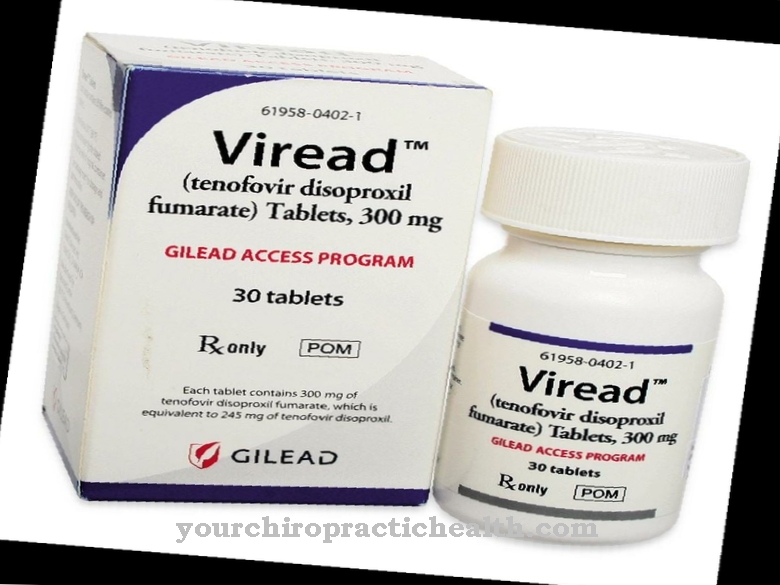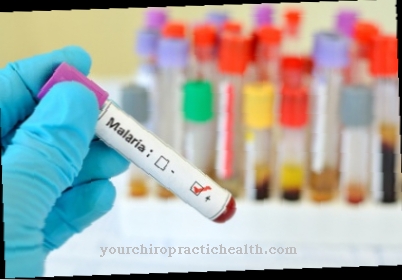As Cholestyramine is called an absorption inhibitor. It is used to treat hypercholesterolemia.
What is colestyramine?

Colestyramine is a styrene, a colorless liquid that smells sweet. The active ingredient is used to treat diseases of the fat metabolism. As a water-insoluble macromolecule, colestyramine cannot be catalyzed by the body's own enzymes and is not influenced by the metabolism.
Colestyramine is used particularly when the concentration of LDL cholesterol in the blood is too high. To treat this, the patient must first go on a diet. If this does not lead to the hoped-for success, cholesterol-lowering drugs such as statins are administered. If these show no effect either, colestyramine comes into play, which is combined with the statins. Only if the doctor does not consider the use of statins helpful or if they are not well tolerated by the patient, colestyramine is administered alone.
Pharmacological effect
Colestyramine is a resin that has the ability to bind water. However, it is not water-soluble. Since the active ingredient cannot be digested either, it passes through the intestine without any changes. In the gastrointestinal tract, colestyramine ensures the targeted breakdown of bile acids.
Actually, cholestyramine is a cholestyramine chloride. For this reason, upon contact with salts from the bile acids, the chloride is exchanged for the rest of the bile acid, which forms common salt (sodium chloride).
Bile acids are produced entirely in the liver by means of cholesterol. The bile acids enter the intestine during digestion. However, the intestine recovers large parts of the bile acids and forwards them to the liver. However, these bile acids are bound by the cholestyramine, which in turn slows their return. This also affects the liver, which begins to produce new bile acids due to the lack of bile acids. The organ upregulates the enzyme cholesterol 7a-hydroxylase. Because the liver produces more bile acids through this process, it leads to an increased consumption of cholesterol. This no longer appears in the blood. In this way, the elevated LDL cholesterol levels drop.
Medical application & use
Colestyramine is used to treat hypercholesterolemia, which causes high levels of cholesterol in the blood. The active ingredient is also suitable for treating diarrhea due to excess bile acids. Colestyramine can also be used to treat jaundice (jaundice) and itching due to partial occlusion of the biliary tract.
Colestyramine is also used as a diagnostic agent for chologene diarrhea. If this is caused by a surgical procedure, the active ingredient is also used to treat diarrhea.
Another area of application is the interruption of the enteropathic circulation in the event of drug intoxication. With the colestyramine, drugs that are dependent on the enteropathic circulation can be better eliminated. This includes u. a. the remedy digitoxin.
Colestyramine is taken in the form of chewable tablets, powder and granules, which are commercially available. The patient takes the colestyramine-containing medication orally with plenty of water.
Risks & side effects
As with other medications, taking colestyramine can have unpleasant side effects. However, these side effects do not show up in every patient. Medicines are tolerated differently by people. The most common symptoms of constipation, bloating, loss of appetite, heartburn, nausea, vomiting, diarrhea and flatulence after administration of colestyramine are observed. In rare cases, there may also be a reduced intake of fat-soluble vitamins, a deficiency of folic acid in the blood, and an increased fat stool. In patients who suffer from functional disorders of the kidneys or in children who have an excess of chlorine, there is a risk of hyperacidity of the organism.
There are also some known contraindications to colestyramine. The agent must not be administered in the event of hypersensitivity to the drug, obstructions of the bile duct or an intestinal obstruction (ileus). In pregnancy, too, colestyramine is only considered a last resort if there are no other treatment options. The reason for this is the reduced intake of important fat-soluble vitamins such as vitamins A, D, E and K, which can have a negative impact on the child's health. Colestyramine is considered safe to use during breastfeeding, as the agent does not get into breast milk. Therapy of children and adolescents with the drug is also possible.
The administration of colestyramine can also cause interactions with other medicinal products. There is a risk of reduced or delayed absorption of these preparations. These primarily include the diuretic hydrochlorothiazide, the anti-epileptic phenobarbital, the anti-inflammatory drug phenylbutazone, thyroid hormones and the antibiotics penicillin G and tetracycline. It is recommended to take these remedies four hours after taking the cholestyramine.



























